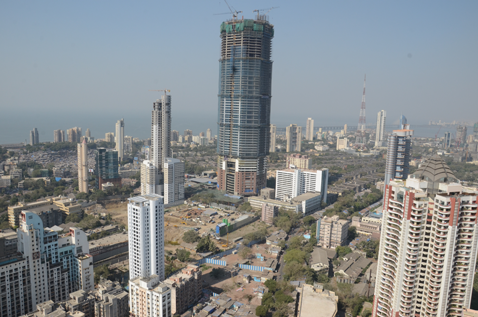
 — Giles Everitt, Managing Director, Chryso India
— Giles Everitt, Managing Director, Chryso India
Chryso India, formerly known as SWC and established in 1930, has been one of the pioneers of construction chemicals in India. The company offers high-performance additives for cement, admixtures for concrete and products for construction systems. It has four units across three verticals – concrete business, construction systems and cement grinding aids. Giles Everitt spoke to Sandeep Menezes on the growth of Chryso and construction chemicals in India.
We understand that Chryso entered India in 2006 through a minority equity stake in Structural Waterproofing Company. Can you tell us how this alliance has shaped up over the years?
Firstly, we identified SWC as an acquisition target in India. SWC as a business has been within the construction chemicals business for nearly 70 years. Therefore, they had strong brand acceptance within their specific market. We saw that the coverage they had, especially of the four metros, was a good fit for Chryso to be introduced into India.
But SWC was primarily waterproofing and construction systems. The core strength of Chryso is concrete admixtures and cement grinding aids. As a result of that we were able to piggyback on the footprint of SWC to introduce Chryso products into India.
In 2008, we as a business acquired 100 per cent of SWC. So now SWC is a 100 per cent Chryso-owned company. At that point it gave us the opportunity to introduce Chryso because we had 100 per cent control of that company. We then introduced our full technology range for concrete admixtures and cement grinding aids. We then encompassed the construction systems business as it stood and tried to act at it.
Now that the company is 100 per cent Chryso, we now look to invest heavily within the plant network that was in existence. So we have a new plant in Alwar (Rajasthan), a new plant in Chennai (Tamil Nadu), a new R&D centre in Mumbai (Maharashtra), and a new greenfield site under construction near Kolkata (West Bengal)
How much is Chryso investing in this capacity expansion?
We are investing significantly. It will be around Rs.10 crore plus ancillary land costs.
Alwar has been done in 2012, Chennai in 2013 and Kolkata will be done in 2015. Also, we had the R&D centre in Mumbai. So it is continuous investment into our plant infrastructure. We are also investing in our people in India.
We have moved our business from what was a regional structure to a vertical integrated structure of three business units. These are concrete, cement and construction systems.
Can you tell us about Chryso’s export portfolio in India?
We export to Southeast Asia and also support other subsidiaries from India. Our exports from India are significant and growing.
What is your business model in India? Globally, we understand your major markets are cement and precast manufacturers, and construction companies.
Our global market is concrete and within concrete we are looking at readymix concrete, precast concrete and jobsite. When you look at cement grinding aids, it is to facilitate the cement manufacturers in grinding efficiency. There are cement grinding aids and raw mill grinding aids. We are then looking at vertical roller mills.
Do you have any suggestions for the Government of India’s ‘Make in India’ campaign?
Any assistance that the government can give with regard to fund availability will be widely appreciated. Across the chemicals industry, there is a high degree of import of raw materials; therefore, any assistance on customs duties will be good.
Tell us about your engagement with Lodha Group’s World One project.
We are supporting many projects in the Mumbai region, out of which this is one project. Lafarge has a dedicated plant for this project as per contract. We are providing Lafarge with a full technical support programme and this goes from different classes of cement grade such as M90 to M50 and M40 and M20.
This is a high-rise project of 117 floors. Therefore, the difficulty is getting concrete sky-bound properly so that the performance of the concrete at that height is specific with no pumping issues. It involves highly technical and advanced concrete solutions.
India is a big market for construction, be it infrastructure, industrial or residential and commercial real estate. What do you think will be the biggest demand drivers?
Right now the main demand driver is infrastructure. We have got the 12th Five-Year Plan which is extremely significant. Then the next driver will be residential due to urbanisation. But I feel that infrastructure will be the core driver for the cement industry.
It helps us not only with regard to concrete admixtures but also with cement grinding which aids volumes.
It is absolutely important that the infrastructure programme is in place to boost India’s GDP.
In spite of potential, India has a poor penetration of construction chemicals.
If you look at the construction industry for last two years, it’s been the worst since last 20 years. The 12th Five-Year Plan is giving huge confidence to the cement industry to add capacity.
The vision is that by 2020 we will have achieved 500 million tonnes of cement consumption. We are at 270 million tonnes today, so there is huge potential for growth of around 10 per cent per annum. I feel that cement is the barometer of the construction industry.
We also have to look at how much of cement manufacturing is mechanised; it is less than 30 per cent today.
This gives me great confidence with regard to our investment plans. Chryso is gearing up in the correct way for the future of the construction chemicals market over the next five years. Our growth would mirror the growth of the cement industry which would be around 10 per cent per annum.











